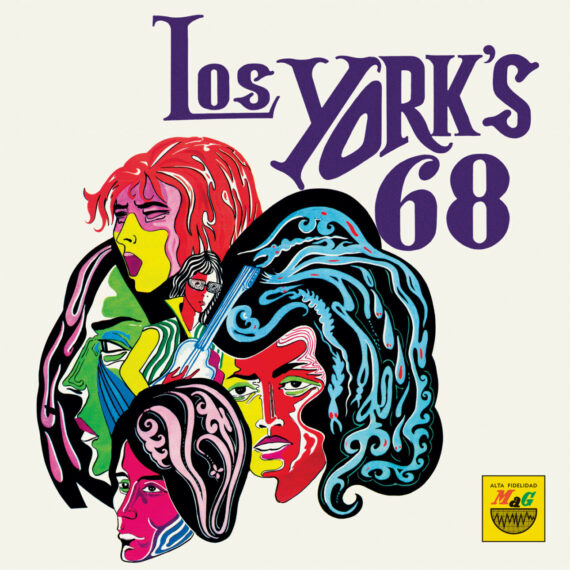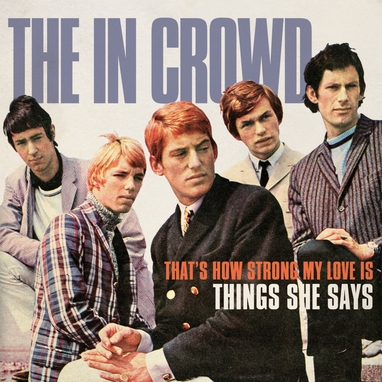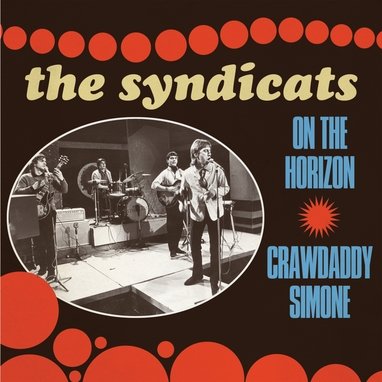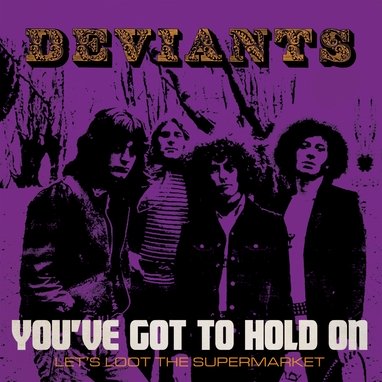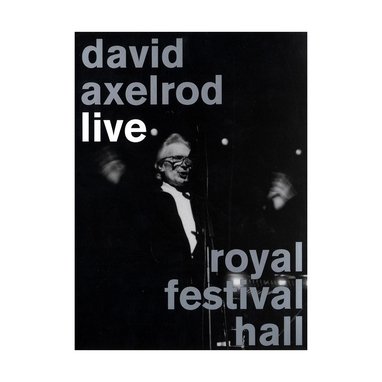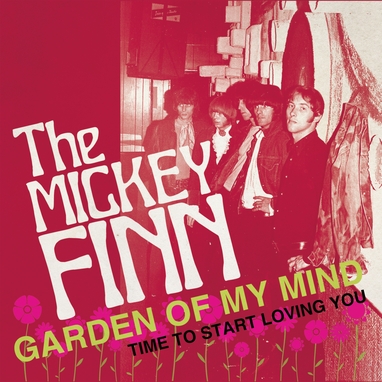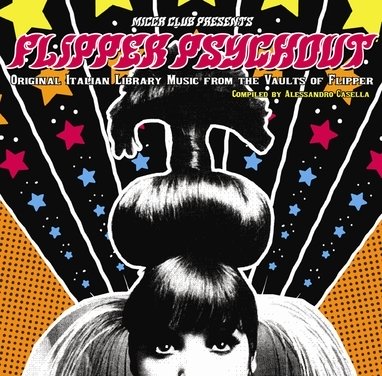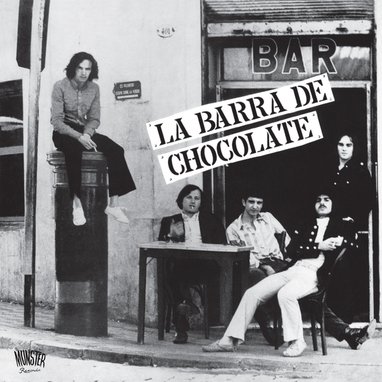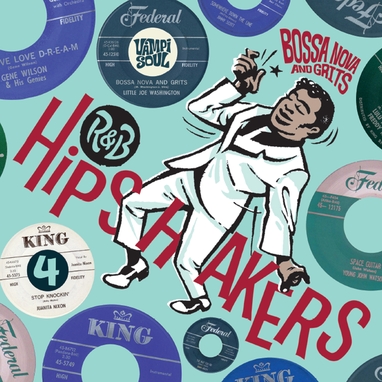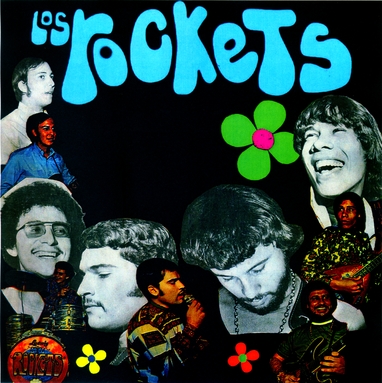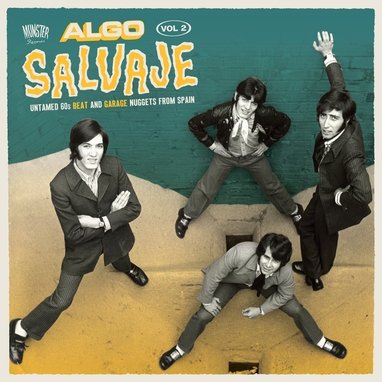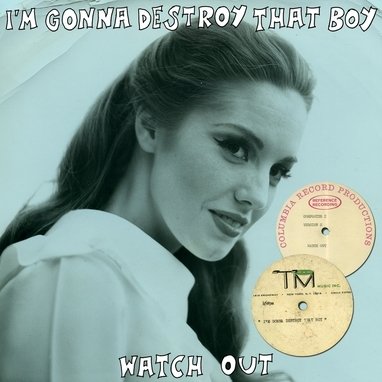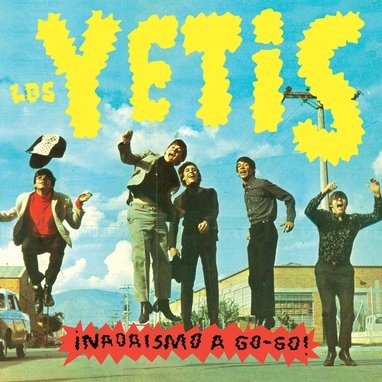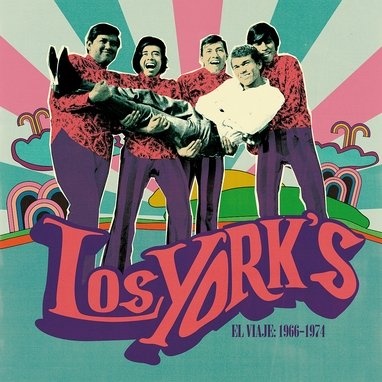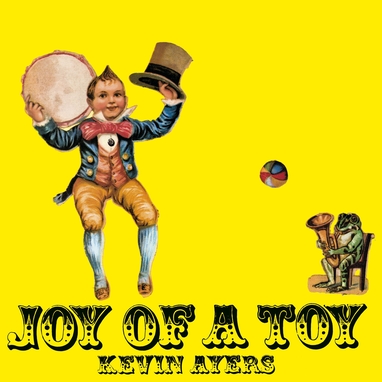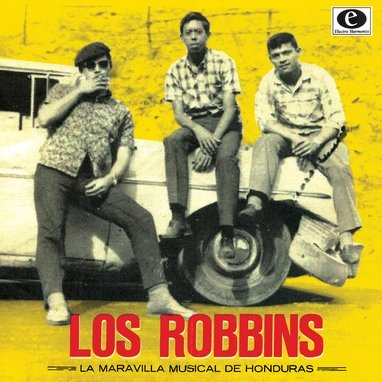Los York's
68
Los York's
68
Los York’s became the epitome of Peruvian garage sound and the kings of the multi-group concerts which teenagers flocked to on Saturday and Sunday mornings in Lima’s main movie theaters.
Their second LP was released with cover art based on the album by the American band The Other Half, recreated by a local designer, and featuring their classic beat-influenced go-go twang guitar garage psych tone throughout.
It includes some stunning covers of Don Covay, Cream, The Monkees or The Kinks’ songs, as well as a bunch of originals and a new, longer and fuzzier version of their hit ‘Abrázame, Baby’.
At the beginning of 1968, Los York’s was the most popular group in Peru at morning shows, parties and on tours, and had a legion of fans who found the answers to their youthful concerns in the band’s songs. The bulk of the quintet’s repertoire were Spanish versions of their favorite rock songs in English, where they took advantage of free translation to speak openly about freedom, drugs and hippy love… Their supportive fans would follow them to every gig.
That same year Los York’s would announce the new album was in the makings and would comprise two of their own songs and eight cover versions ranging from well-known hits to vinyl rarities. In a world without the internet and global communications, it would be interesting to know how South American bands found about little-known groups like The Downbeat, The Music Machine, Flavor or Kim Fowley, achieving equal or even greater impact with their cover versions than the original songs did. How did those vinyl singles travel so far south?
“68” was finally released in October of that year, with cover art based on the album by the American band The Other Half, recreated by designer Estanislao “Zanahoria” Ruiz. The versions include ‘Solo pido amor’, by Rocky Roberts & The Airedales (‘Can’t ask no more’). ‘La punta de mi lengua’ is a cover of The Grass Roots’ song (‘Tip of my tongue’) featuring the multifaceted Pablo Villanueva (aka Melcochita) on xylophone. The nostalgic ‘Charo’, originally by The McCoys (‘Sorrow’), is dedicated to a friend of the group.
‘Abrázame, baby’ is another recording of ‘Abrázame’ —Don Covay original—, released on the previous album. The band decided that adding their newly acquired fuzztone and making the track twice as long would convey its psychedelic spirit better, making it the song people requested the most at their parties.
‘El viaje’ owes its inspiration to the song ‘The trip’, by Kim Fowley, but it was gradually transformed in rehearsals until it moved away from the original, while keeping its lysergic jamming spirit. Tracks like this one, where drummer Pancho Aguilar speeds up the beat, were called ritmazo in the youth slang of the day. The other versions included are ‘Vallery’, by The Monkees (‘Valleri’); ‘Mira tú’, by The Kinks (‘Revenge’); and ‘La alegría de tu amor’, by Cream (‘Sunshine of your love’).
The album ends with fast-paced ‘Solo estoy’, a ritmazo composed by Pablo Luna, which shows the good vibes in the day-to-day life of the group.
However, these good vibes did not extend fully towards MAG. At the end of October, the record company announced an exclusive concert for the press to launch the latest recordings by Rita Sáenz, Zig Cero, Los Teddys, Traffic Sound and Los York’s, but the quintet didn’t show up as they wanted to protest about their fees not going up. This incident had an unusual denouement over the next few months.
Productos relacionados
21,00€
Los York’s became the epitome of Peruvian garage sound and the kings of the multi-group concerts which teenagers flocked to on Saturday and Sunday mornings in Lima’s main movie theaters.
Their second LP was released with cover art based on the album by the American band The Other Half, recreated by a local designer, and featuring their classic beat-influenced go-go twang guitar garage psych tone throughout.
It includes some stunning covers of Don Covay, Cream, The Monkees or The Kinks’ songs, as well as a bunch of originals and a new, longer and fuzzier version of their hit ‘Abrázame, Baby’.
At the beginning of 1968, Los York’s was the most popular group in Peru at morning shows, parties and on tours, and had a legion of fans who found the answers to their youthful concerns in the band’s songs. The bulk of the quintet’s repertoire were Spanish versions of their favorite rock songs in English, where they took advantage of free translation to speak openly about freedom, drugs and hippy love… Their supportive fans would follow them to every gig.
That same year Los York’s would announce the new album was in the makings and would comprise two of their own songs and eight cover versions ranging from well-known hits to vinyl rarities. In a world without the internet and global communications, it would be interesting to know how South American bands found about little-known groups like The Downbeat, The Music Machine, Flavor or Kim Fowley, achieving equal or even greater impact with their cover versions than the original songs did. How did those vinyl singles travel so far south?
“68” was finally released in October of that year, with cover art based on the album by the American band The Other Half, recreated by designer Estanislao “Zanahoria” Ruiz. The versions include ‘Solo pido amor’, by Rocky Roberts & The Airedales (‘Can’t ask no more’). ‘La punta de mi lengua’ is a cover of The Grass Roots’ song (‘Tip of my tongue’) featuring the multifaceted Pablo Villanueva (aka Melcochita) on xylophone. The nostalgic ‘Charo’, originally by The McCoys (‘Sorrow’), is dedicated to a friend of the group.
‘Abrázame, baby’ is another recording of ‘Abrázame’ —Don Covay original—, released on the previous album. The band decided that adding their newly acquired fuzztone and making the track twice as long would convey its psychedelic spirit better, making it the song people requested the most at their parties.
‘El viaje’ owes its inspiration to the song ‘The trip’, by Kim Fowley, but it was gradually transformed in rehearsals until it moved away from the original, while keeping its lysergic jamming spirit. Tracks like this one, where drummer Pancho Aguilar speeds up the beat, were called ritmazo in the youth slang of the day. The other versions included are ‘Vallery’, by The Monkees (‘Valleri’); ‘Mira tú’, by The Kinks (‘Revenge’); and ‘La alegría de tu amor’, by Cream (‘Sunshine of your love’).
The album ends with fast-paced ‘Solo estoy’, a ritmazo composed by Pablo Luna, which shows the good vibes in the day-to-day life of the group.
However, these good vibes did not extend fully towards MAG. At the end of October, the record company announced an exclusive concert for the press to launch the latest recordings by Rita Sáenz, Zig Cero, Los Teddys, Traffic Sound and Los York’s, but the quintet didn’t show up as they wanted to protest about their fees not going up. This incident had an unusual denouement over the next few months.
Productos relacionados
68
Los York’s became the epitome of Peruvian garage sound and the kings of the multi-group concerts which teenagers flocked to on Saturday and Sunday mornings in Lima’s main movie theaters.
Their second LP was released with cover art based on the album by the American band The Other Half, recreated by a local designer, and featuring their classic beat-influenced go-go twang guitar garage psych tone throughout.
It includes some stunning covers of Don Covay, Cream, The Monkees or The Kinks’ songs, as well as a bunch of originals and a new, longer and fuzzier version of their hit ‘Abrázame, Baby’.
At the beginning of 1968, Los York’s was the most popular group in Peru at morning shows, parties and on tours, and had a legion of fans who found the answers to their youthful concerns in the band’s songs. The bulk of the quintet’s repertoire were Spanish versions of their favorite rock songs in English, where they took advantage of free translation to speak openly about freedom, drugs and hippy love… Their supportive fans would follow them to every gig.
That same year Los York’s would announce the new album was in the makings and would comprise two of their own songs and eight cover versions ranging from well-known hits to vinyl rarities. In a world without the internet and global communications, it would be interesting to know how South American bands found about little-known groups like The Downbeat, The Music Machine, Flavor or Kim Fowley, achieving equal or even greater impact with their cover versions than the original songs did. How did those vinyl singles travel so far south?
“68” was finally released in October of that year, with cover art based on the album by the American band The Other Half, recreated by designer Estanislao “Zanahoria” Ruiz. The versions include ‘Solo pido amor’, by Rocky Roberts & The Airedales (‘Can’t ask no more’). ‘La punta de mi lengua’ is a cover of The Grass Roots’ song (‘Tip of my tongue’) featuring the multifaceted Pablo Villanueva (aka Melcochita) on xylophone. The nostalgic ‘Charo’, originally by The McCoys (‘Sorrow’), is dedicated to a friend of the group.
‘Abrázame, baby’ is another recording of ‘Abrázame’ —Don Covay original—, released on the previous album. The band decided that adding their newly acquired fuzztone and making the track twice as long would convey its psychedelic spirit better, making it the song people requested the most at their parties.
‘El viaje’ owes its inspiration to the song ‘The trip’, by Kim Fowley, but it was gradually transformed in rehearsals until it moved away from the original, while keeping its lysergic jamming spirit. Tracks like this one, where drummer Pancho Aguilar speeds up the beat, were called ritmazo in the youth slang of the day. The other versions included are ‘Vallery’, by The Monkees (‘Valleri’); ‘Mira tú’, by The Kinks (‘Revenge’); and ‘La alegría de tu amor’, by Cream (‘Sunshine of your love’).
The album ends with fast-paced ‘Solo estoy’, a ritmazo composed by Pablo Luna, which shows the good vibes in the day-to-day life of the group.
However, these good vibes did not extend fully towards MAG. At the end of October, the record company announced an exclusive concert for the press to launch the latest recordings by Rita Sáenz, Zig Cero, Los Teddys, Traffic Sound and Los York’s, but the quintet didn’t show up as they wanted to protest about their fees not going up. This incident had an unusual denouement over the next few months.
Los York's
68
Los York’s became the epitome of Peruvian garage sound and the kings of the multi-group concerts which teenagers flocked to on Saturday and Sunday mornings in Lima’s main movie theaters.
Their second LP was released with cover art based on the album by the American band The Other Half, recreated by a local designer, and featuring their classic beat-influenced go-go twang guitar garage psych tone throughout.
It includes some stunning covers of Don Covay, Cream, The Monkees or The Kinks’ songs, as well as a bunch of originals and a new, longer and fuzzier version of their hit ‘Abrázame, Baby’.
At the beginning of 1968, Los York’s was the most popular group in Peru at morning shows, parties and on tours, and had a legion of fans who found the answers to their youthful concerns in the band’s songs. The bulk of the quintet’s repertoire were Spanish versions of their favorite rock songs in English, where they took advantage of free translation to speak openly about freedom, drugs and hippy love… Their supportive fans would follow them to every gig.
That same year Los York’s would announce the new album was in the makings and would comprise two of their own songs and eight cover versions ranging from well-known hits to vinyl rarities. In a world without the internet and global communications, it would be interesting to know how South American bands found about little-known groups like The Downbeat, The Music Machine, Flavor or Kim Fowley, achieving equal or even greater impact with their cover versions than the original songs did. How did those vinyl singles travel so far south?
“68” was finally released in October of that year, with cover art based on the album by the American band The Other Half, recreated by designer Estanislao “Zanahoria” Ruiz. The versions include ‘Solo pido amor’, by Rocky Roberts & The Airedales (‘Can’t ask no more’). ‘La punta de mi lengua’ is a cover of The Grass Roots’ song (‘Tip of my tongue’) featuring the multifaceted Pablo Villanueva (aka Melcochita) on xylophone. The nostalgic ‘Charo’, originally by The McCoys (‘Sorrow’), is dedicated to a friend of the group.
‘Abrázame, baby’ is another recording of ‘Abrázame’ —Don Covay original—, released on the previous album. The band decided that adding their newly acquired fuzztone and making the track twice as long would convey its psychedelic spirit better, making it the song people requested the most at their parties.
‘El viaje’ owes its inspiration to the song ‘The trip’, by Kim Fowley, but it was gradually transformed in rehearsals until it moved away from the original, while keeping its lysergic jamming spirit. Tracks like this one, where drummer Pancho Aguilar speeds up the beat, were called ritmazo in the youth slang of the day. The other versions included are ‘Vallery’, by The Monkees (‘Valleri’); ‘Mira tú’, by The Kinks (‘Revenge’); and ‘La alegría de tu amor’, by Cream (‘Sunshine of your love’).
The album ends with fast-paced ‘Solo estoy’, a ritmazo composed by Pablo Luna, which shows the good vibes in the day-to-day life of the group.
However, these good vibes did not extend fully towards MAG. At the end of October, the record company announced an exclusive concert for the press to launch the latest recordings by Rita Sáenz, Zig Cero, Los Teddys, Traffic Sound and Los York’s, but the quintet didn’t show up as they wanted to protest about their fees not going up. This incident had an unusual denouement over the next few months.

